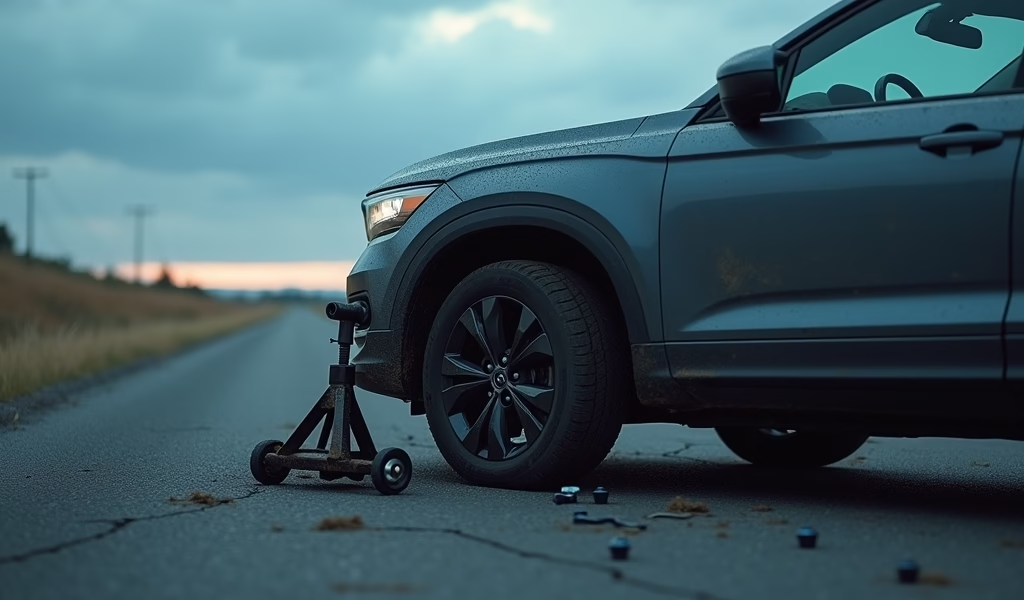Overview
This guide explores the complete process of buying a car online, covering everything from research and platform selection to financing, negotiation tactics, and final inspection. It highlights the advantages of online car shopping—including convenience, broader selection, and potential cost savings—while providing practical strategies to avoid common pitfalls and ensure a successful purchase experience.
Table of Contents
- Why Buy a Car Online? Freedom From the Dealership Experience
- Research Phase: Setting Yourself Up for Success
- The Best Online Car Buying Platforms in 2023
- The Virtual Test Drive: Making Smart Decisions Remotely
- Financing Strategies That Save You Money
- Digital Negotiation Tactics That Work
- Delivery and Inspection: Protecting Your Purchase
- Avoiding Common Online Car Buying Pitfalls
- Conclusion: Your Road to Online Car Buying Success
- Frequently Asked Questions
Why Buy a Car Online? Freedom From the Dealership Experience
I remember the old days of car buying all too well—the uncomfortable showroom chairs, the hovering salespeople, and that weird coffee that’s been sitting in the pot since 7 AM. But those days are fading fast. The process of buying a car online has revolutionized how we shop for vehicles, and I couldn’t be happier about it.
According to research from McKinsey, about 30% of car purchases now involve significant online components, with fully digital transactions growing at 25% annually since 2020. That’s not just a trend—it’s a full-blown revolution in how we buy cars.
So what makes online car buying so appealing? For starters, you can do it while wearing your favorite ratty pajamas and fuzzy slippers—try pulling that off at a dealership! But the real benefits go much deeper:
- Shop on your schedule—whether that’s midnight or during your kid’s soccer practice
- Browse through thousands of vehicles instead of the few dozen at your local dealership
- Compare prices across the country to find the absolute best deal
- Avoid sales pressure and take all the time you need to decide
- Save money (often 5-8%) without the overhead costs of traditional dealerships
Just last month, I helped my neighbor Sarah find a certified pre-owned RAV4 online. She spent three evenings browsing options while watching Netflix, found exactly what she wanted for $2,300 less than the local asking price, and had it delivered to her driveway. The entire process took less time than a single Saturday at a dealership would have.
Research Phase: Setting Yourself Up for Success
Before you dive into the digital car marketplace, you need to do some homework. Trust me, I’ve seen too many folks get dazzled by a pretty paint job only to realize they’ve bought something that doesn’t fit their needs or budget.
Know Your Financial Boundaries
Start by getting real with yourself about money. This isn’t just about what payment you can afford—it’s about the total cost of ownership. Here’s your financial prep checklist:
- Calculate your maximum budget (including taxes, fees, and delivery costs)
- Check your credit score through a free service like Credit Karma
- Consider getting pre-approved for financing (more on that later)
- Factor in insurance costs, which can vary dramatically by model
- Don’t forget about maintenance—some cars are way cheaper to maintain than others
Pro tip: The old rule of thumb is to keep your car payment below 15% of your monthly take-home pay. That gives you breathing room for insurance, gas, and the inevitable maintenance costs.
Needs vs. Wants: Be Brutally Honest
I’ve been fixing cars for decades, and I can tell you that the difference between a happy car owner and a miserable one often comes down to this simple exercise. Grab a paper and make two columns:
In your “Needs” column, list the non-negotiables: passenger capacity, cargo space, fuel economy, safety features, and reliability requirements.
In your “Wants” column, put the nice-to-haves: sunroof, premium sound, fancy wheels, that electric blue color you love.
My client Tom insisted he “needed” a sports car until we did this exercise and he realized that with three kids and hockey equipment, what he actually needed was a mid-size SUV. The Mazda CX-5 he eventually bought has been perfect for his family—and its zippy handling still gives him some driving enjoyment.

The Best Online Car Buying Platforms in 2023
Not all online car buying platforms are created equal. After helping countless clients navigate these waters, I’ve developed some clear favorites. Here’s the honest breakdown of where to shop:
All-Digital Car Retailers
- Carvana – Their famous car vending machines are cute, but what I really love is their 7-day return policy and detailed photography. Great for used cars with transparent pricing.
- Vroom – Similar to Carvana but often with slightly different inventory. Their delivery times can be longer, but I’ve seen some great deals here.
- CarMax – A hybrid model with physical locations but a robust online experience. Their “no-haggle” pricing means you won’t get the absolute lowest price, but their quality standards are consistently high.
Manufacturer Direct Options
Several car manufacturers now allow you to buy directly from them online:
- Tesla – The pioneer of online car sales. Their process is streamlined, though customization options can delay delivery.
- Ford – Their online ordering system lets you build your vehicle and have it delivered to a local dealership.
- Volvo – Offers both purchasing and subscription options online.
Traditional Dealers With Online Options
Don’t overlook the traditional players who have modernized:
- AutoNation Express – America’s largest dealer group offers a surprisingly good online experience.
- TrueCar – Partners with dealers to offer upfront pricing.
- Local dealers – Many now offer “express purchase” options on their websites.
Marketplace Platforms
These sites aggregate listings from multiple sellers:
- Cars.com and Autotrader – The grandparents of online car shopping, they offer extensive filtering options and connect you with dealers.
- Facebook Marketplace – For the brave souls comfortable with buying from private sellers. Great deals can be found, but so can scams—proceed with caution!
My client Jessica found her dream Subaru Outback through Cars.com after filtering for exactly the features she wanted. She told me, “I never would’ve found this car at my local dealers—it was three states away but exactly what I wanted at the right price.”
The Virtual Test Drive: Making Smart Decisions Remotely
The biggest challenge in online car buying is obvious—you can’t physically touch, sit in, or drive the car before purchasing. As someone who’s spent decades with my hands in engine bays, I get the hesitation. But technology has created some pretty impressive workarounds.
Making the Most of Virtual Tools
- 360-degree videos – These let you “sit” in the driver’s seat and look around. Pay attention to visibility, dashboard layout, and space.
- Detailed photos – Look for listings with 30+ high-res images. Check panel gaps, tire tread, interior wear, and engine bay cleanliness.
- Feature demonstrations – Many listings include videos of key features in action. Watch these carefully.
Research Beyond the Listing
Never rely solely on the seller’s materials. Do your homework:
- Watch independent YouTube reviews of the exact make, model, and year
- Read owner forums for common complaints and reliability issues
- Check Consumer Reports and J.D. Power ratings
- Research recall information through the NHTSA database
When my buddy Mark was considering a 2020 Honda CR-V online, YouTube reviews alerted him to an oil dilution problem in some engines. He knew to ask specific questions about that issue and ultimately chose a slightly different trim level that didn’t have the problem.
Virtual Reality and Live Video Options
The most advanced online car retailers now offer:
- VR experiences compatible with smartphone headsets
- Live video walkarounds where a representative shows you the specific vehicle
- Remote test drives where a salesperson drives while you watch via video call
These options aren’t universal yet, but they’re becoming more common—especially at dealerships trying to compete with the all-digital retailers.
Financing Strategies That Save You Money
If there’s one area where I see folks leaving money on the table, it’s car financing. The difference between smart and sloppy financing can literally be thousands of dollars over the life of a loan.
Get Pre-Approved Before Shopping
This is my number one financing tip: get pre-approved for a loan before you even start shopping. Here’s why:
- It establishes your real budget ceiling
- It gives you leverage against dealer financing offers
- It protects you from emotional decisions when you find “the one”
- It speeds up the purchase process once you find your car
Where should you get pre-approved? Check with your bank, local credit unions (often the best rates), and online lenders like LightStream or Capital One Auto Navigator. Get 2-3 quotes minimum.
Understanding the Total Cost
Don’t get fixated on the monthly payment—that’s how people end up paying way too much for cars. Instead, focus on:
- The total loan amount (including fees and taxes)
- The interest rate (APR)
- The loan term (shorter is almost always better)
- The total interest you’ll pay over the life of the loan
My client Rachel was considering a 72-month loan until we calculated that she’d pay an extra $3,200 in interest compared to a 48-month loan. She took the shorter loan with slightly higher payments and saved all that money.

Digital Negotiation Tactics That Work
Just because you’re buying online doesn’t mean you can’t negotiate. In fact, digital negotiations often work in your favor because they remove the emotional pressure of face-to-face interactions. Here are my tried-and-true tactics:
The Power of Written Communication
Use email or platform messaging systems to your advantage:
- Written offers create a clear paper trail
- You can take time to think and respond without pressure
- You can negotiate with multiple sellers simultaneously
- Emotions stay in check, keeping you focused on the numbers
Leverage Multiple Quotes
This is my favorite strategy: use competition to your advantage.
Find similar vehicles from different sellers, then let them know you’re considering multiple options. When you get an offer from one, ask others if they can beat it. Don’t be afraid to share the competing quote (with identifying information removed).
My client David saved $2,700 on his Toyota Tacoma by playing three different online retailers against each other over the course of two days—all through email while he was at work.
Timing Your Purchase
Even online, timing matters:
- End of the month when sales teams are trying to hit targets
- End of the quarter when publicly traded companies report earnings
- December when annual goals need reaching
- Model year changeovers (usually September-October)
I helped a client find a great deal on a used car off an online marketplace by shopping in late December when dealers were desperate to clear inventory before year-end. She saved about 7% compared to the same car’s price in November.
Delivery and Inspection: Protecting Your Purchase
The moment of truth arrives when your new car shows up. As a mechanic, I can’t stress enough how important this phase is—it’s your last chance to catch problems before finalizing the purchase.
Delivery Options Explained
Most online retailers offer several delivery methods:
- Home delivery – The most convenient option. The car comes right to your driveway.
- Dealership pickup – If you’re buying through a platform that partners with local dealers.
- Destination centers – Carvana’s vending machines and similar facilities.
- Third-party transport – Common for long-distance purchases from private sellers or smaller dealers.
The Essential Inspection Checklist
When your car arrives, channel your inner mechanic with this inspection checklist:
- Check that the VIN matches all paperwork
- Verify the odometer reading matches what was advertised
- Inspect the exterior in good lighting for damage, scratches, or paint inconsistencies
- Test all electronics: lights, windows, locks, infotainment, climate control
- Check under the hood for fluid leaks or obvious issues
- Test drive on different road types (if possible before finalizing)
- Check all safety features including cameras, sensors, and driver assists
Document everything with photos or video. This provides proof of the car’s condition at delivery—critical if you need to make claims about undisclosed damage.
Understanding Return Policies
One of the biggest advantages of reputable online car retailers is their return policies:
- Carvana and Vroom offer 7-day return periods
- CarMax gives you 30 days/1,500 miles
- Traditional dealers typically offer 3-5 day returns
- Private sales usually have no return option
Read the fine print! Some policies have mileage limits or restocking fees. Know exactly what your options are before accepting delivery.
Avoiding Common Online Car Buying Pitfalls
After helping dozens of friends and clients through online car purchases, I’ve seen the same mistakes pop up repeatedly. Here’s how to avoid them:
Hidden Fee Detection
Online doesn’t always mean transparent. Watch for:
- “Documentation fees” that can range from $100 to $700
- Delivery or transportation charges
- Prep fees or reconditioning charges
- Extended warranties automatically added
- GAP insurance at marked-up prices
Always demand a line-by-line breakdown of all charges before payment. If something doesn’t make sense, question it.
Vehicle History Investigation
Never—and I mean never—skip the vehicle history report. This $25-40 investment can save you from buying a car with:
- Previous accident damage
- Flood or fire damage
- Odometer tampering
- Title problems (salvage, rebuilt, lemon law)
- Multiple owners or concerning ownership patterns
Get your own report through Carfax or AutoCheck even if the seller provides one. I’ve seen cases where provided reports were altered or outdated.
Warranty Verification
Understand exactly what warranty coverage you’re getting:
- New cars typically have bumper-to-bumper warranties of 3-5 years
- Used cars from dealers often include limited 30-90 day warranties
- Certified Pre-Owned (CPO) vehicles have extended manufacturer warranties
- Private sales typically come with no warranty at all
Get warranty details in writing, including exactly what’s covered and for how long. If buying a used car that should still have factory warranty, verify the warranty is transferable and still in effect.
Conclusion: Your Road to Online Car Buying Success
Buying a car online isn’t just a pandemic-era necessity—it’s genuinely a better way to shop for vehicles. You get more options, better pricing, less pressure, and the convenience of shopping in your pajamas. What’s not to love?
The key to success is approaching the process with the right balance of research and caution. Take your time with the research phase, be realistic about your budget and needs, leverage pre-approval for financing, and be thorough during inspection and delivery.
Remember that the digital car buying landscape continues to evolve rapidly. What seemed cutting-edge a year ago is standard practice today. Keep your eye on emerging trends like fully-digital paperwork processing, AI-powered vehicle matching, and enhanced virtual reality experiences that will make remote car buying even more seamless.
The days of spending your weekends trudging from dealership to dealership are over—and speaking as someone who’d rather be fishing or working on my project car, that’s a very good thing. Happy digital car hunting!
Frequently Asked Questions
Is it really safe to buy a car online without seeing it first?
Yes, it’s safe when using reputable platforms that offer return policies and vehicle history reports. Major online retailers like Carvana and CarMax have built-in protections for buyers.
How do I arrange a test drive when buying online?
Some platforms offer home test drives before purchase, while others have local partner locations. With fully-online retailers, the test drive typically happens during the return window after delivery.
Can I get better financing through online car buying?
Often yes, because you can shop multiple lenders beforehand. Pre-approved financing gives you leverage to negotiate better terms with the online retailer’s financing options.
What if I receive a car that doesn’t match the online description?
Document the discrepancies immediately with photos and contact the seller. Reputable online retailers will either address the issues or allow you to return the vehicle under their policy.
How long does it take to buy a car online from start to finish?
The process typically takes 1-2 weeks from initial search to delivery. The actual purchase process once you’ve selected a vehicle can be as quick as 30 minutes of online paperwork.

